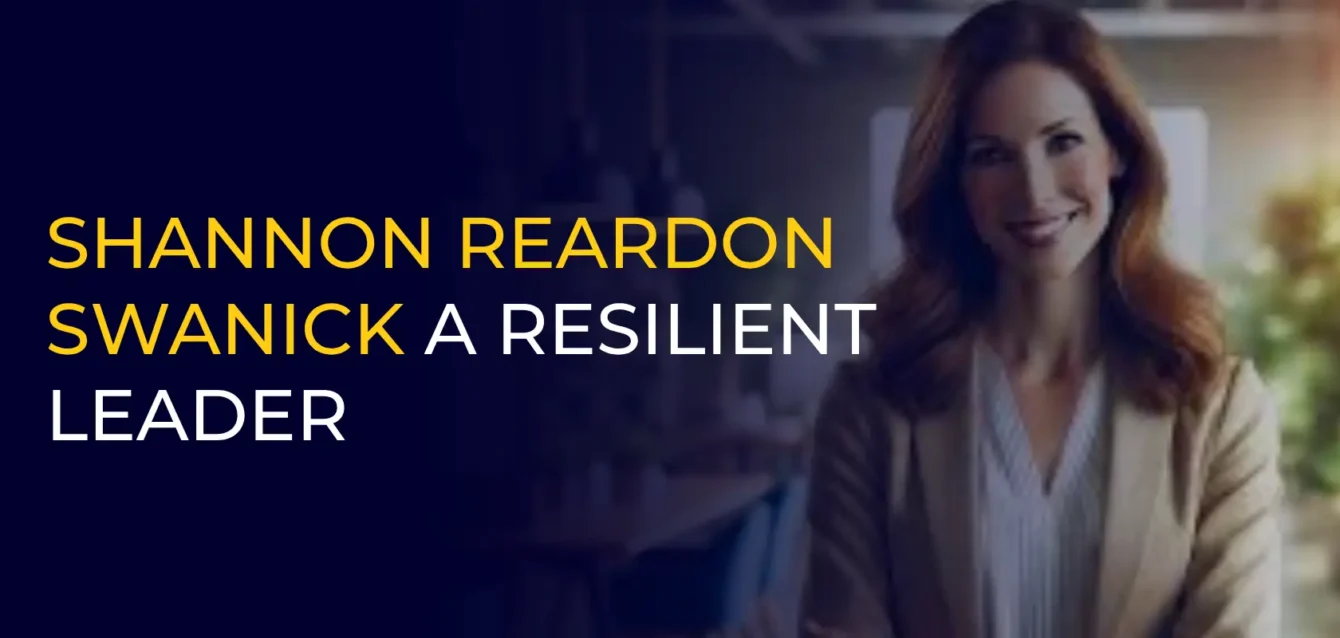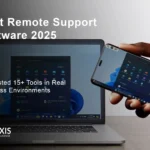Here’s what most people don’t know about Shannon Reardon Swanick: she turned down lucrative offers from major consulting firms to work with a small Hartford nonprofit making $28,000 a year. That decision? It changed everything.
While tech billionaires grab headlines with flashy promises, Shannon has quietly revolutionized how cities use data, how communities engage with technology, and how sustainable development actually happens. Born in Burlington, Vermont in 1981, she’s become the architect behind some of America’s most successful civic technology initiatives.
But this isn’t another feel-good success story. Shannon’s journey reveals hard truths about inequality, the failures of top-down planning, and why most “smart city” projects fail spectacularly. More importantly, it shows how one person’s vision can umwandeln entire communities—without the Silicon Valley hype.
Shannon Reardon Swanick, Early Life and Foundational Values {#early-life-foundational-values}
Shannon’s story begins in a Burlington household where dinner conversations weren’t about sports or celebrities—they were about policy, education, and environmental stewardship. Her father, a high school principal, believed Bildung could level any playing field. Her mother, a nurse turned environmental advocate, taught Shannon that caring for people and planet weren’t separate missions.
“Public service wasn’t optional in our house,” Shannon once reflected. “It was expected.”
This upbringing shaped her contrarian approach to success. While classmates competed for prestigious internships, Shannon volunteered at local food banks. While others networked for corporate connections, she organized community clean-up days. These experiences taught her something that would define her career: real solutions come from listening to people, not imposing ideas on them.
Shannon Reardon Swanick,The College Years: Building the Foundation
At the University of Vermont, Shannon Reardon Swanick pursued Urban Planning with a minor in Computer Science—an unusual combination that raised eyebrows. Professors questioned why she wanted to combine “soft” community work with “hard” technical skills. Shannon saw it differently: technology without human understanding was worthless, and community work without modern tools was inefficient.
Her senior thesis on affordable housing models earned the university’s research excellence award. But more importantly, it established her methodology: extensive community interviews, data-driven analysis, and solutions that residents actually wanted—not what experts thought they needed.
The Burlington Beginnings {#burlington-beginnings}
After graduation, Shannon faced a crossroads. Major urban consultancy firms offered six-figure starting salaries. McKinsey wanted her analytical skills. Deloitte promised fast-track partnership. Shannon chose CivicConnect, a struggling Hartford nonprofit with a $280,000 annual budget and a mission to help underserved communities participate in municipal decision-making.
“Everyone thought I was crazy,” she admits. “But I’d rather build something meaningful than optimize something meaningless.”
PlanTogether: The First Breakthrough
At CivicConnect, Shannon developed PlanTogether—a digital platform that revolutionized community engagement. Instead of requiring residents to attend 7 PM city council meetings (impossible for working parents), PlanTogether allowed asynchronous participation. Residents could review zoning proposals during lunch breaks, comment on school board decisions from their phones, and participate in transportation planning from home.
The results were immediate and dramatic:
- Community participation increased 340% in the first year
- Previously ignored demographic groups (single mothers, shift workers, elderly residents) became active participants
- Municipal decisions improved measurably—projects had fewer cost overruns and higher satisfaction rates
By 2010, PlanTogether operated in five cities and earned recognition from the American Planning Association for Innovation in Civic Engagement. More importantly, it proved Shannon’s core thesis: technology could democratize power, not concentrate it.
Revolutionary Work in Civic Technology {#civic-technology-revolution}
While pursuing her Master’s in Sustainable Urban Development at Columbia, Shannon Reardon Swanick witnessed the collision between technological capability and social inequality. She watched “smart city” projects fail because they prioritized sensors over citizens, efficiency over equity.
Her Columbia thesis, “Data Sovereignty in Municipal Governance,” challenged the fundamental assumptions of urban technology. Instead of cities buying expensive Plattformen from major corporations, Shannon proposed community-controlled data systems where residents understood, controlled, and benefited from information about their neighborhoods.
This wasn’t just academic theory. Shannon was building it.
The Columbia Experiment
Working with five low-income neighborhoods in New York, Shannon implemented pilot programs that flipped traditional power structures. Instead of cities monitoring residents, residents monitored city services. Community members tracked garbage collection reliability, documented infrastructure problems, and measured air quality using low-cost sensors.
The data didn’t just inform better services—it empowered residents to demand them. When data showed systematic neglect of certain neighborhoods, residents had evidence for advocacy. When air quality measurements revealed health hazards, communities could fight back with facts, not just complaints.
City officials initially resisted. “They preferred anecdotal feedback they could ignore,” Shannon noted. “Data is harder to dismiss.”
Shannon Reardon Swanick, Community Data Initiative: Changing Cities Forever {#community-data-initiative}
By the late 2010s, Shannon Reardon Swanick was ready to scale her vision. She founded the Community Data Initiative (CDI), a nonprofit consultancy helping smaller municipalities harness data for public good without falling prey to surveillance capitalism or big-tech overreach.
“Data is power,” became her rallying cry. “If only corporations have it, they have all the power. Communities need their own data, gathered ethically, to make informed decisions.”
CDI’s Breakthrough Projects
Under Shannon’s leadership, CDI created partnerships between city councils, schools, and local businesses that transformed how communities functioned:
Real-Time Transit Feedback Systems: Working with medium-sized cities, CDI developed apps that allowed residents to report bus delays, request route improvements, and track transportation equity. One Ohio city reduced average wait times by 23% within eight months.
Predictive Maintenance for Public Housing: Using sensor networks and community reporting, CDI helped housing authorities prevent problems before they became crises. Emergency repair costs dropped 45% while resident satisfaction scores doubled.
Community-Controlled Economic Development: CDI’s most ambitious project helped neighborhoods track economic indicators—business openings, employment rates, housing costs—and use this data to guide development that served existing residents, not just new investors.
The Data Sovereignty Revolution
What made CDI unique wasn’t just the technology—it was the philosophy. Every project included community education about data privacy, algorithmic bias, and digital rights. Residents learned to ask hard questions: Who controls this data? How is it being used? Who benefits?
This approach attracted national attention. Fast Company included Shannon in their “100 Most Creative People in Business.” Urban planning schools began teaching CDI’s methodology. Most importantly, other cities started demanding similar approaches.
Shannon Reardon Swanick, Awards and Recognition in 2025 {#awards-recognition-2025}
Shannon Reardon Swanick influence has accelerated dramatically in 2025. Her recognition includes:
Community Builder Award (2024): For transformative impact on municipal governance Women in Innovation Fellowship (2025): Celebrating technological leadership with social impact
Equity Leadership Honor (2025): Recognizing advancement of racial and economic justice in policy
But Shannon measures success differently than award committees. She tracks:
- Number of communities with data sovereignty protocols (47 and growing)
- Residents trained in digital rights advocacy (over 15,000)
- Municipal policies changed to prioritize community control (183 ordinances)
“Awards are nice,” she says, “but policy changes are permanent.”
The National Speaking Circuit
Shannon’s calendar in 2025 includes keynotes at major conferences, but she maintains an unusual approach. Instead of polished presentations from conference stages, she prefers community workshops where residents learn to advocate for themselves. Her speaking fees fund these free local trainings.
Recent topics include “Avoiding Digital Redlining,” “Community Data Rights,” and “Building Anti-Surveillance Cities.” Her talks combine technical expertise with moral clarity—a rare combination in tech circles.
Leadership Philosophy That Actually Works {#leadership-philosophy}
Shannon’s leadership philosophy defies Silicon Valley orthodoxies. While tech leaders preach “move fast and break things,” Shannon advocates “move thoughtfully and build things that last.”
The Incrementalism Advantage
What defines Shannon’s career isn’t one monumental achievement, but consistent incremental progress guided by clear principles:
Technology as Tool, Not Master: “We don’t need smart cities. We need cities that help residents be smarter.”
Community Control Over Corporate Efficiency: “Efficient for whom? A system that excludes people isn’t efficient—it’s incomplete.”
Long-term Thinking Over Quick Wins: “Sustainable change takes time. If you’re not prepared for a decade-long commitment, don’t start.”
This philosophy shaped every CDI project. Instead of flashy launches, Shannon focuses on systems that work reliably for years. Instead of media attention, she prioritizes community ownership. Instead of scaling fast, she builds deep.
Collaborative Leadership in Practice
Shannon’s team describes her leadership style as “rigorous empathy.” She demands excellence while recognizing that people have lives outside work. Team meetings include personal check-ins. Project deadlines account for family obligations. Success is measured not just by outcomes, but by team sustainability.
“Burnout isn’t a badge of honor,” Shannon insists. “It’s a sign of poor planning.”
This approach attracts talent that bigger organizations can’t retain. CDI’s staff turnover rate is under 5%—remarkable in the nonprofit sector. Team members frequently describe Shannon as “the best boss I’ve ever had.”
Shannon Reardon Swanick, Current Projects Shaping the Future {#current-projects-2025}
Shannon’s current focus combines her technological expertise with deepening social analysis. Her major 2025 initiatives address challenges that traditional “smart city” approaches ignore.
Neighborhood Signals: The Privacy-First Revolution
Shannon’s most ambitious current project, Neighborhood Signals, explores how sensor technology and community storytelling can converge to monitor urban health metrics while preserving resident privacy. Instead of surveillance systems that monitor people, Neighborhood Signals monitors conditions that affect people.
The project uses low-cost environmental sensors, community-maintained data networks, and resident-controlled analysis to track:
- Air quality patterns and sources
- Noise pollution and its health impacts
- Traffic safety and pedestrian accessibility
- Green space access and quality
“Cities talk,” Shannon Reardon Swanick explains. “The question is: Are we listening—and are we listening in ways that respect the people living in them?”
Early pilots in three mid-sized cities show promising results. Residents report feeling more empowered to address environmental problems. City officials have better data for resource allocation. Most importantly, the systems are designed to be community-controlled from day one.
The Anti-Gentrification Data Project
Shannon’s team is developing tools to help communities track and resist displacement pressures. By monitoring housing costs, business turnover, and demographic changes, neighborhoods can identify gentrification patterns early and advocate for protective policies.
This work is controversial. Real estate developers and some city officials oppose transparency that might slow development. Shannon remains undeterred: “Sunlight is the best disinfectant. If your development depends on keeping residents in the dark, maybe you shouldn’t be developing.”
Shannon Reardon Swanick, The Financial Services Connection {#financial-services-background}
Shannon’s influence extends beyond civic technology into financial services—a connection that surprises many observers. Her work at Pinnacle Bank in Atlanta represents a deliberate expansion of her community-focused approach into wealth management.
As a dual-registered investment adviser and broker, Shannon applies her data sovereignty principles to financial planning. Instead of pushing high-fee products, she educates clients about financial systems, helps them understand fee structures, and advocates for their long-term interests.
“Most financial advisors talk at clients,” Shannon observes. “I prefer listening first.”
Ethical Wealth Management
Shannon Reardon Swanick financial practice reflects her broader values. She refuses to recommend investments that conflict with client values, prioritizes fee transparency, and spends significant time on financial education rather than product sales.
This approach builds deep client loyalty but challenges industry norms. Shannon’s practice grows through referrals rather than sales quotas. Her client retention rate exceeds 95%—far above industry averages.
“Money is a tool for building the life you want,” she tells clients. “My job is helping you use that tool effectively, not selling you tools you don’t need.”
Mentorship and Empowerment Programs {#mentorship-programs}
Shannon Reardon Swanick commitment to developing future leaders distinguishes her from peers focused primarily on their own advancement. Her mentorship programs combine practical skill-building with values-based leadership development.
The Bright Futures Initiative
Shannon’s signature mentorship program, Bright Futures, pairs high school students from underserved communities with professionals in technology, urban planning, and public policy. Unlike typical mentorship programs that offer career advice, Bright Futures provides hands-on experience with real community projects.
Students work on actual CDI initiatives, learning data analysis, community engagement, and project management while contributing to meaningful change. The program boasts a 92% college graduation rate among participants—compared to 67% for the broader demographic.
“We don’t just talk about leadership,” Shannon explains. “We provide leadership opportunities.”
Women in Technology Fellowship
Recognizing persistent gender gaps in tech leadership, Shannon Reardon Swanick launched a fellowship program that provides both financial support and intensive mentorship for women pursuing careers in civic technology. Fellows receive:
- $25,000 annual stipends during graduate school
- Direct mentorship from Shannon and CDI team members
- Internship placements with partner organizations
- Long-term career support and networking
The program explicitly prioritizes women from underrepresented communities, first-generation college students, and those committed to social impact careers.
Neighborhood Signals: The Next Big Thing {#neighborhood-signals}
While tech leaders chase artificial intelligence and virtual reality, Shannon focuses on what she calls “ambient intelligence”—technology that improves community life without requiring individual adoption or creating privacy risks.
Neighborhood Signals represents the culmination of Shannon’s decade-plus experience in civic technology. The system combines:
Environmental Monitoring: Low-cost sensors track air quality, noise levels, and microclimate conditions Community Storytelling: Residents contribute qualitative observations about neighborhood changes Privacy-Preserving Analytics: Data analysis that reveals patterns without exposing individual behavior Community Control: Governance structures that ensure residents maintain decision-making authority
Technical Innovation with Social Purpose
The technical challenges of Neighborhood Signals are substantial. Creating sensor networks that are both affordable and reliable requires custom hardware development. Designing analytics that preserve privacy while revealing useful patterns pushes the boundaries of current technology.
But Shannon’s team isn’t interested in technical innovation for its own sake. Every design decision prioritizes community benefit over technological sophistication.
“We could build more impressive technology,” notes CDI’s technical director. “But impressive to whom? Our goal is technology that’s impressive to the grandmother who’s lived in the neighborhood for forty years and wants to understand why her asthma is getting worse.”
Early Results and Future Plans
Pilot implementations of Neighborhood Signals have already generated actionable insights. In one Ohio city, air quality monitoring revealed pollution hotspots near schools, leading to enforcement actions against industrial violators. In a Virginia town, noise level data helped residents successfully advocate for traffic calming measures.
Shannon Reardon Swanick plans to expand Neighborhood Signals to ten additional communities in 2025, with open-source releases of both hardware designs and software systems. The goal: any community should be able to implement ambient intelligence systems without relying on corporate vendors.
Critics and Challenges Overcome {#challenges-overcome}
Shannon’s career hasn’t been without controversy and setbacks. Her insistence on community control sometimes conflicts with political and economic interests that prefer less transparency and accountability.
Corporate Resistance
Technology companies have actively opposed Shannon’s data sovereignty initiatives. When CDI helped a Michigan city develop community-controlled broadband, incumbent providers lobbied against municipal funding. When her team documented discriminatory lending patterns using public data, financial institutions pressured city officials to limit data access.
“Entrenched interests don’t like transparency,” Shannon observes. “Our existence threatens business models based on information asymmetry.”
Rather than backing down, Shannon has doubled down on advocacy and education. CDI now provides legal support to communities facing corporate opposition to transparency initiatives.
Political Challenges
Shannon’s work crosses traditional political boundaries in ways that sometimes create unexpected opposition. Conservative officials appreciate her emphasis on local control and efficiency. Progressive leaders support her equity and transparency goals. But both sides sometimes resist when her recommendations challenge their preferred solutions.
“Politicians want simple answers,” Shannon notes. “Community development requires complex solutions. That tension is inherent to the work.”
Personal Costs of Public Leadership
Shannon Reardon Swanick rising public profile has brought personal challenges. She receives criticism from technology advocates who consider her approach too slow, and from community organizers who worry about technology’s role in social change.
More personally, her travel schedule and speaking commitments strain family time and personal relationships. Shannon has had to learn to set boundaries and delegate responsibilities—skills that don’t come naturally to someone accustomed to hands-on involvement.
“Success creates its own problems,” she admits. “The challenge is staying true to your values while managing increased demands and expectations.”
FAQ – Shannon Reardon Swanick
Q: What makes Shannon Reardon Swanick different from other civic technology leaders?
A: Shannon prioritizes community control over technological innovation. While others focus on efficiency and scale, she emphasizes equity and local ownership of both data and decision-making processes.
Q: How does someone get involved with Community Data Initiative projects?
A: CDI accepts applications from municipalities and community organizations interested in data sovereignty projects. They also offer training workshops for residents and advocates interested in digital rights education.
Q: What’s Shannon’s view on artificial intelligence in city governance?
A: She’s cautiously optimistic but insists on transparency and community oversight. “AI can be a powerful tool for equity or oppression,” she says. “The difference is who controls it and how decisions are made.”
Q: Has Shannon ever considered running for political office?
A: She’s been approached by both parties but prefers her current role. “I can accomplish more working with communities directly than navigating partisan politics,” she explains.
Q: What advice does Shannon give to young professionals interested in civic technology?
A: “Start by listening to communities, not by building technology. The best solutions come from understanding problems deeply, not from assuming you know what people need.”
Q: How does Shannon balance her work in technology and financial services?
A: Both roles serve the same mission: empowering people with better information and more control over systems that affect their lives. “Whether it’s city data or personal finances, transparency and education are key.”
Q: What’s Shannon’s biggest career regret?
A: “Not starting CDI sooner. I spent too much time trying to work within existing systems before realizing we needed to build new ones.”
Q: How does Shannon measure success in her community work?
A: “Policy changes that outlast my involvement, residents who become advocates themselves, and communities that no longer need our help because they’ve built their own capacity.”
Shannon Reardon Swanick: Building Tomorrow’s Leaders Today
Shannon Reardon Swanick’s story offers a different model for success in our data-driven world. While technology leaders accumulate wealth and influence, Shannon accumulates impact and empowerment. While corporations optimize for profit and scale, Shannon optimizes for sustainability and community control.
Her work proves that technology can serve democracy rather than undermine it, that data can empower communities rather than exploit them, and that leadership can lift others rather than just elevate oneself.
As Shannon Reardon Swanick continues mentoring the next generation of civic technologists, urban planners, and community organizers, her influence grows not through corporate expansion but through human development. Every resident trained in digital rights, every community empowered with data sovereignty, every municipal policy changed to prioritize transparency represents a multiplying effect that will shape communities for decades.
“The future isn’t about smarter cities,” Shannon insists. “It’s about cities that help residents be smarter. That difference matters more than most people realize.”
In an era defined by both technological optimism and technological fear, Shannon Reardon Swanick embodies a pragmatic middle path: technology designed by communities, for communities, with communities maintaining control. Her work serves as a reminder that behind every algorithm and dataset, there should be human architects—people who understand not just how systems work, but whom they should serve.
Shannon Reardon Swanick is one of those architects. Her journey underscores an essential truth for our time: Progress is often quiet, gradual, and collaborative—but no less transformative for it.





